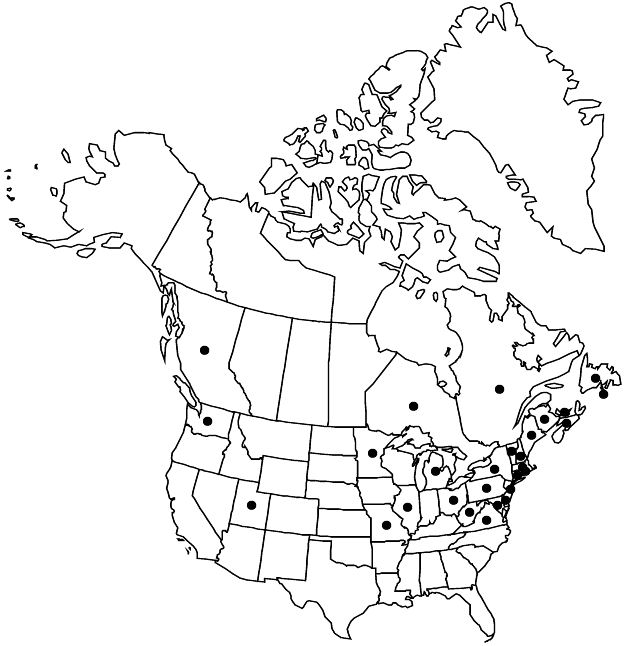Difference between revisions of "Rosa rugosa"
in J. A. Murray, Syst. Veg. ed. 14, 473. 1784.
imported>Volume Importer |
imported>Volume Importer |
||
| Line 1: | Line 1: | ||
{{Treatment/ID | {{Treatment/ID | ||
|accepted_name=Rosa rugosa | |accepted_name=Rosa rugosa | ||
| − | |accepted_authority=Thunberg | + | |accepted_authority=Thunberg |
|publications={{Treatment/Publication | |publications={{Treatment/Publication | ||
|title=in J. A. Murray, Syst. Veg. ed. | |title=in J. A. Murray, Syst. Veg. ed. | ||
| Line 43: | Line 43: | ||
-->{{#Taxon: | -->{{#Taxon: | ||
name=Rosa rugosa | name=Rosa rugosa | ||
| − | |authority=Thunberg | + | |authority=Thunberg |
|rank=species | |rank=species | ||
|parent rank=section | |parent rank=section | ||
| Line 58: | Line 58: | ||
|publication year=1784 | |publication year=1784 | ||
|special status=Introduced;Weedy | |special status=Introduced;Weedy | ||
| − | |source xml=https:// | + | |source xml=https://bitbucket.org/aafc-mbb/fna-data-curation/src/2e0870ddd59836b60bcf96646a41e87ea5a5943a/coarse_grained_fna_xml/V9/V9_144.xml |
|subfamily=Rosaceae subfam. Rosoideae | |subfamily=Rosaceae subfam. Rosoideae | ||
|tribe=Rosaceae tribe Roseae | |tribe=Rosaceae tribe Roseae | ||
Latest revision as of 22:54, 5 November 2020
Shrubs, forming thickets. Stems erect, sometimes arching, 10–25 dm, densely branched; bark greenish white when young, purplish black with age, densely tomentose or puberulent; infrastipular prickles paired, erect, stout, subulate, 10 × 4 mm, base pubescent, internodal prickles similar, densely mixed with aciculi and stipitate glands. Leaves 7–11 cm; stipules 20–30 × 4–7 mm, auricles flared, 4–6 mm, margins entire or unevenly serrate, sessile-glandular, surfaces rugose, glabrous or pubescent, glandular; petiole and rachis with pricklets usually curved, subequal, pubescent, usually sparsely glandular; leaflets 5–9, terminal: petiolule 8–18 mm, blade widely elliptic to ovate, rarely obovate, 20–55 × 10–35 mm, leathery, rugose, base cuneate to obtuse, margins usually 1-crenate-serrate, eglandular, sometimes gland-tipped, teeth 11–17 per side, sometimes gland-tipped, apex obtuse to acute, abaxial surfaces gray-green, deeply veined, pubescent, eglandular, adaxial dark green, lustrous, rugose, glabrous. Inflorescences corymbs, 1(–4)-flowered. Pedicels erect, sometimes reflexed (as hip matures), stout, 10–15(–30) mm, pubescent, sometimes setose, sparsely sessile- or stipitate-glandular; bracts 2, ovate-lanceolate, 12(–15) × 2(–5) mm, margins entire with few hairs, eglandular or gland-tipped, surfaces pubescent, glandular. Flowers 6–9 cm diam.; hypanthium depressed-globose, 6–8 × 5–6 mm, glabrous, sometimes setose overall or only in neck area, eglandular, rarely glandular, neck 1–2 × 4–5 mm; sepals erect, ovate-lanceolate, 20–37 × 4–6 mm, tip 4–5 × 1–2 mm, margins entire, rarely pinnatifid, tomentose, glandular, abaxial surfaces pubescent, sessile- and stipitate-glandular, often setose; petals single, sometimes double (cultivars), purplish pink or white, 35–50 × 30–45 mm; carpels 48–60, styles exsert 1–2 mm beyond stylar orifice of hypanthial disc (5–10 mm diam.). Hips scarlet, depressed-globose, 18–20 × 20–25 mm, leathery, glabrous, sometimes setose, eglandular, rarely glandular, neck 1–2 × 4–5 mm; sepals persistent, erect. Achenes basiparietal, 40, tan, 4–6 × 2–4.5 mm. 2n = 14.
Phenology: Flowering Jun–Jul(–Oct).
Habitat: Disturbed areas, roadsides, fields, maritime dunes and bluffs, shores, riparian sites
Elevation: 0–1000 m
Distribution

Introduced; St. Pierre and Miquelon, B.C., N.B., Nfld. and Labr. (Nfld.), N.S., Ont., P.E.I., Que., Alaska, Conn., Del., Ill., Maine, Md., Mass., Mich., Minn., Mo., N.H., N.J., N.Y., Ohio, Pa., R.I., Utah, Vt., Va., Wash., W.Va., Asia (n China, Japan, Siberia), introduced also in Europe.
Discussion
Rosa rugosa is possibly indigenous to the western Aleutian Islands, Alaska; such nativity requires further study. Elsewhere in Alaska and other northern habitats, particularly near coastal estuaries and dunes, the species is widely naturalized in North America. It is readily identified by its rugose, leathery leaflets with deep veins, distal branches that are densely tomentose, and flowers 6–9 cm diam., consisting of mostly purplish pink double petals. It can be weedy and is invasive in eastern parts of the United States and Canada, especially along coastlines and waterways.
Some Rosa rugosa hybrids are recognized by their reticulated, deeply veined, rugose, and dark green leaves. The most widespread naturalized hybrid is R. ×hollandica Persoon ex Steudel (Dutch rose), found throughout central and northern Europe, where it has been widely used as rootstock for grafting and budding. In 2010, A. V. Gilman discovered and identified the hybrid in five Vermont localities and, together with D. Werier, also found robust shrubs in an open pasture in Schuyler County, New York.
Gallic acid derivatives and polysaccharides, found in aqueous extracts of Rosa rugosa flowers, demonstrated major antioxidant activity (T. B. Ng et al. 2004). In experiments with animals, extracts of R. rugosa alleviated oxidative stress associated with diabetes by inhibiting lipid peroxidation (E. J. Cho et al. 2004).
Selected References
None.